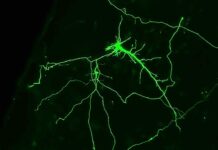-
A Fascinating Question
The notion of whether humans can inhabit Mars has been an enthralling topic for scientists and space enthusiasts alike for numerous years. With recent advancements in technology and space exploration, it is now becoming increasingly possible that humans may someday create a permanent home on the red planet. Nonetheless, this objective is accompanied by significant challenges and considerations that must be addressed.
-
The Martian Environment: A Harsh and Unforgiving Landscape
Mars is an unforgiving and hostile environment that poses a significant threat to human life. With extreme temperatures, low atmospheric pressure, and high radiation levels, Mars presents numerous challenges. For instance, the temperature on Mars can plummet to minus 80 degrees Fahrenheit, and its atmosphere is only 1% as dense as Earth’s, making it a difficult environment to breathe in. Moreover, the planet is bombarded with cosmic radiation, which can cause harm to human health.
-
Creating a Sustainable Environment: The Need for Innovative Solutions
To survive on Mars, humans must devise methods to mitigate the challenges that the planet presents. This would require innovative solutions to establish a stable environment and provide necessities like food, water, and oxygen. This is an arduous challenge as transporting resources from Earth is prohibitively expensive and inefficient.
-
Sustainable Environment Solutions: The Concept of Closed-Loop Systems
Creating a closed-loop system is one solution to the problem of living sustainably on Mars. This involves recycling and reusing waste to support human life. Such a system would require advanced technologies such as air purification, water filtration, and waste processing. Alternatively, scientists are exploring the possibility of terraforming Mars to make it a more hospitable environment for humans.
-
Energy: A Critical Factor
Energy is another significant factor to consider when establishing a human presence on Mars. Humans require a reliable source of energy to sustain life and power equipment. One potential solution is solar power, as Mars receives more sunlight than Earth due to its proximity to the sun. Nuclear power is another possibility that could provide a more dependable source of energy but would require substantial technological advancements and safety considerations.
-
Mental and Physical Health: The Human Factor
Living on Mars would be a considerable psychological and physical challenge. Astronauts would be cut off from their families and friends, and living in a confined space for extended periods could have significant mental health consequences. Additionally, the low gravity environment could have adverse effects on human health, such as muscle and bone loss.
-
Addressing Mental and Physical Health: A Focus on Well-being
Scientists are exploring ways to maintain astronaut’s physical and mental well-being, such as social interaction and regular exercise. Additionally, future missions may involve a diverse group of astronauts to help address the psychological challenges of isolation.
-
Conclusion: A Worthwhile Endeavor
In conclusion, the idea of humans living on Mars is no longer just a sci-fi dream. With the advancement in technology and space exploration, it is increasingly becoming a feasible goal. However, significant challenges remain, such as establishing a sustainable environment, providing a reliable source of energy, and maintaining astronaut’s physical and mental health. Overcoming these challenges will require significant innovation, collaboration, and investment. Nonetheless, the potential benefits of establishing a human presence on Mars, such as advancing our understanding of the universe and paving the way for future space exploration, make the effort worthwhile.
Google News | Telegram
















